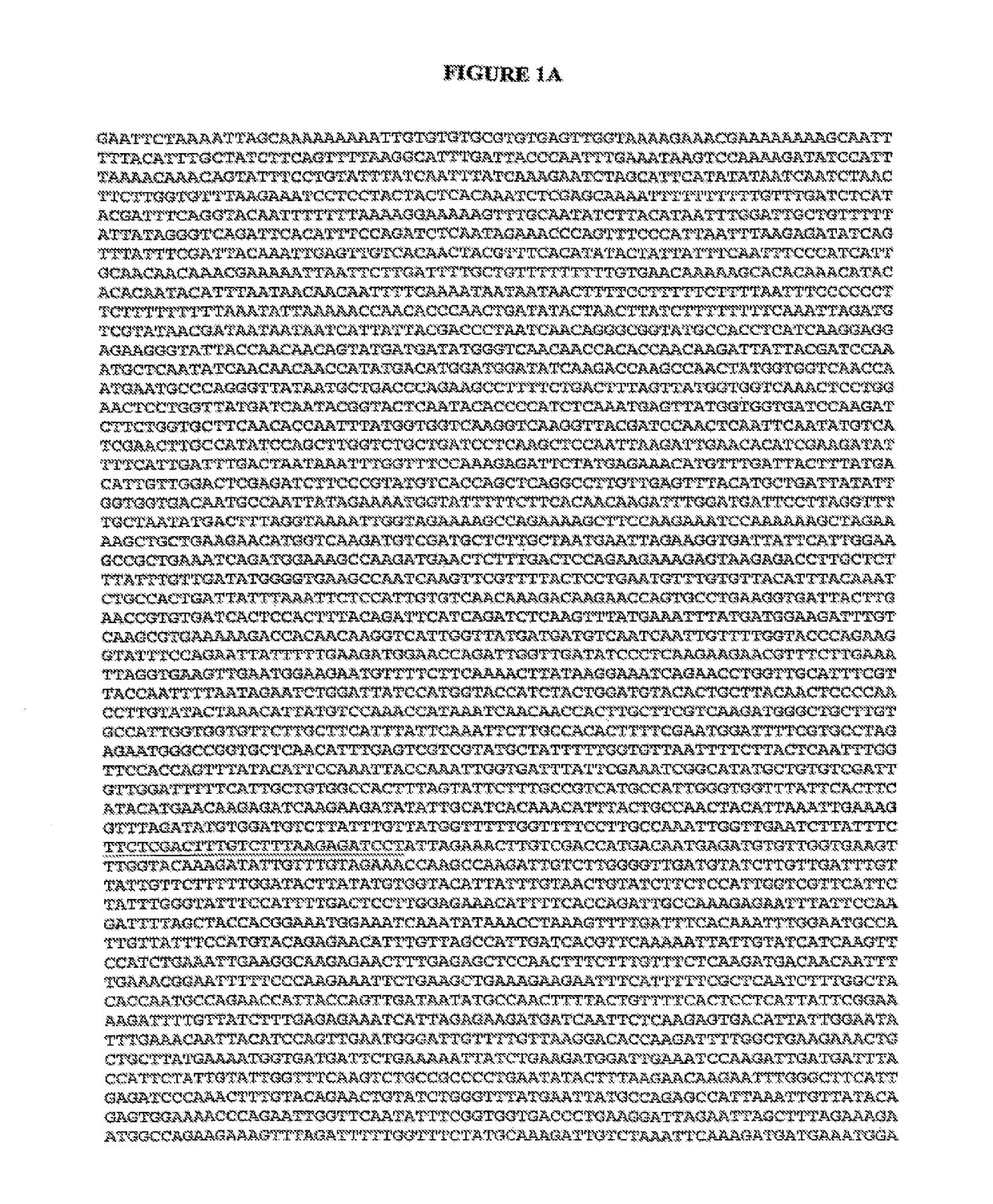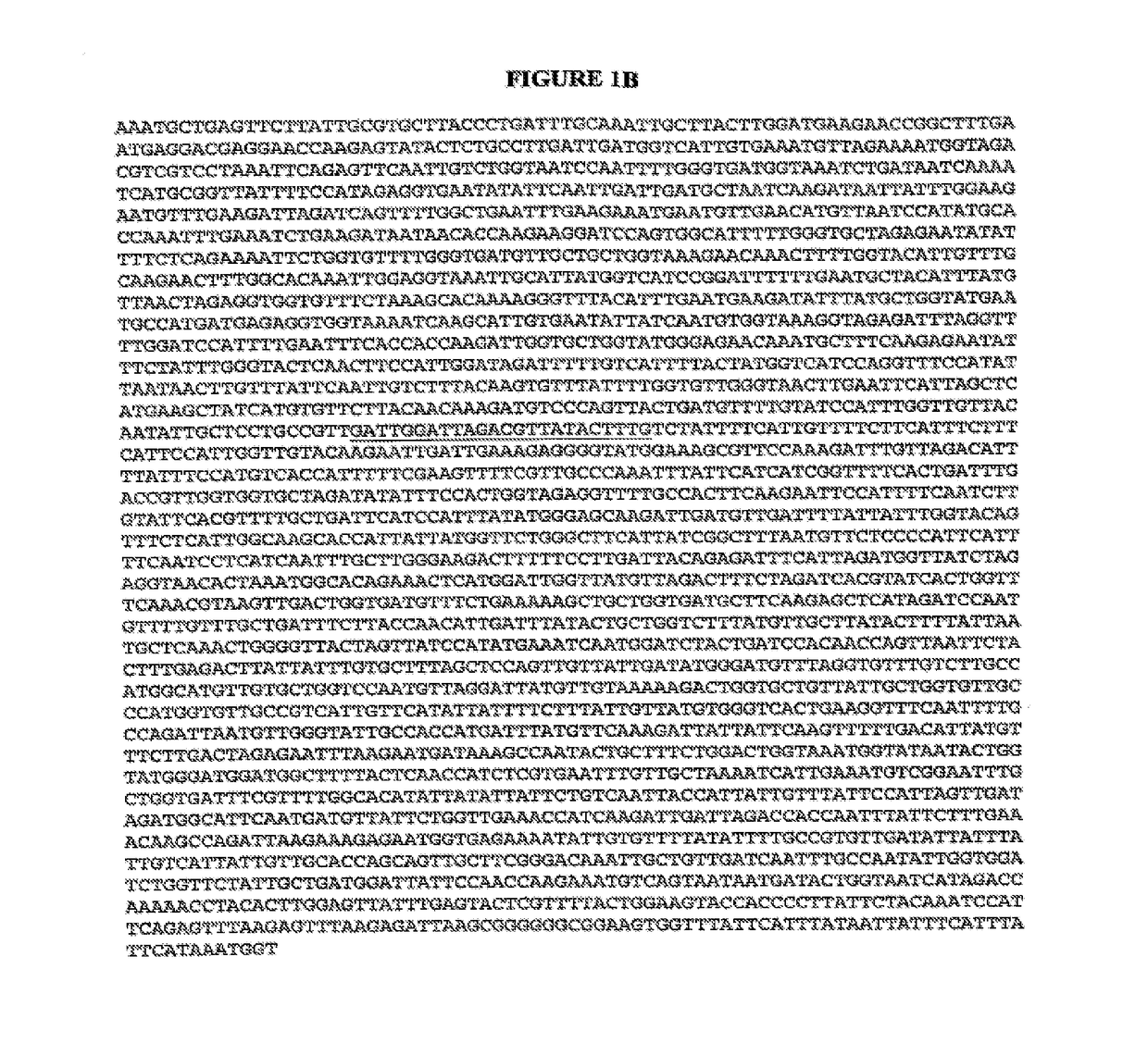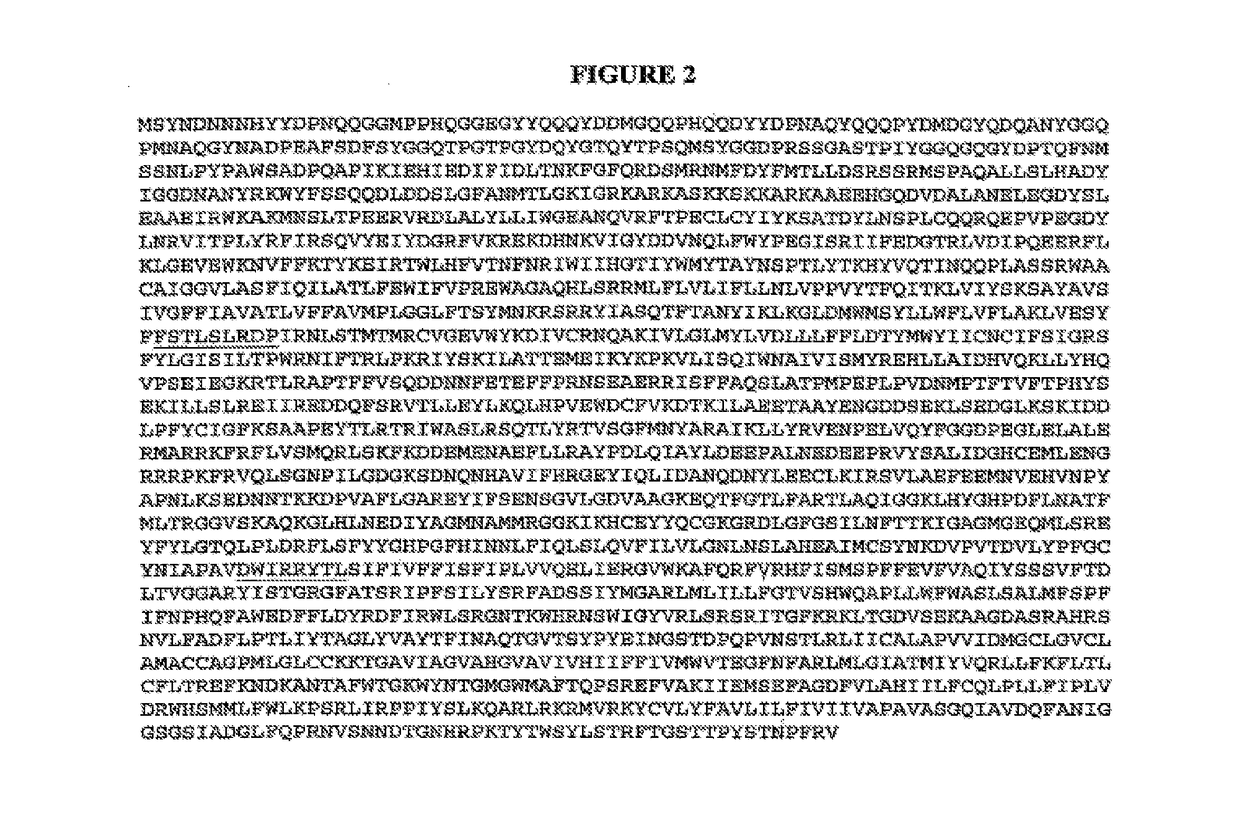Assays for resistance to echinocandin-class drugs
a technology of echinocandin and assays, applied in the field of nucleic acid assays for fungi, can solve the problems of less active against invasiveness, and achieve the effects of broad-spectrum antifungal activity, less active, and high clinical efficacy
- Summary
- Abstract
- Description
- Claims
- Application Information
AI Technical Summary
Benefits of technology
Problems solved by technology
Method used
Image
Examples
example 1
[0061]Nucleic acid amplification of pertinent fragments of the CaFKS1 gene coupled with cycle sequencing for mutant identification has been demonstrated utilizing four different strains. Fragments of CaFKS1 (ca. 450 bp) were amplified from genomic DNA from strains CAI4-R1, NR2, NR3, and NR4. The sense and antisense primers used for PCR, based on CaFKS1 sequence (GenBank Accession no. D88815), were 5′-GAAATCGGCATATGCTGTGTC-3′ (SEQ ID NO: 21) and 5′-AATGAACGACCAATGGAGAAG-3′ (SEQ ID NO: 22), respectively. PCR products were cloned into pCR2.1 (Invitrogen) and the DNA sequence was determined. For clinical Candida isolates, a larger portion of the CaFKS1 ORF (ca 2.6 kb) was amplified for DNA sequence analysis using 5′-CATTGCTGTGGCCACTTTAG-3′ (SEQ ID NO: 23) and 5′-GGTCAAATCAGTGAAAACCG-3′ (SEQ ID NO: 24) as the forward and reverse primers, respectively. In addition to the first target region of CaFKS1 described above (corresponding to coding nucleotides 1921-1947), this fragment includes t...
example 2
[0062]DNA sequence analysis using nucleic acid amplification and cycle sequencing can be used both as an assay technique in its own right and as a control to evaluate probe-based assays.
[0063]C. albicans chromosomal DNA was extracted from cells grown overnight in liquid YPD medium with Q-Biogene FastDNA kit (Q-Biogene, Irvine, Calif.). PCR experiments were performed on an iCycler thermocycler (Bio-Rad Laboratories, Hercules, Calif.). The CaFKS1 region denominated HS1 was amplified using primers CaFKS1-F1719 and CaFKS1-R2212 (FIG. 4). Each 100-μl PCR reaction contained 0.25 μM of each primer, 2.5 U of iTaq DNA polymerase (Bio-Rad Laboratories, Hercules, Calif.), 0.5 mM dNTPs, 50 mM KCl, 4 mM MgCl2, 20 mM Tris-HCl, pH=8.4 and about 50 ng of C. albicans chromosomal DNA. The cycling conditions were 1 cycle of 3 min at 95° C., 35 cycles of 30 s at 95° C., 30 s at 55° C., 1 min at 72° C. 1 cycle of 3 min at 72° C. PCR products were purified using the Montage PCR purification kit (Millipor...
example 3
[0066]Three reported DNA sequences CaFKS1 GenBank accession numbers D88815 and AF027295 and CA2043) were used for FKS1 molecular beacons and primers design. Design of primers and probes for assays in known in the art. Numerous publications are available to assist researchers. Additionally, computer software packages are available to speed the process and reduce adjustments that need to be made by trial and error (see Example 4). We used such a software package. Molecular beacons and DNA primers (FIG. 4) were designed using Beacon Designer 3.0 software (PREMIER Biosoft, Palo Alto, Calif.). The default software parameters were applied for all molecular beacons and primers construction. Molecular beacons were labeled with fluorophores 5-carboxyfluorescein (FAM) and 6-carboxy-2′,4,4′,5′,7,7′-hexachlorofluorescein (HEX) at the 5′ end and with dabcyl at the 3′ end. Both molecular beacons and primers were purchased from Biosearch Technologies (Biosearch Technologies, Novato, Calif.). Hybri...
PUM
| Property | Measurement | Unit |
|---|---|---|
| temperature | aaaaa | aaaaa |
| temperature | aaaaa | aaaaa |
| temperature | aaaaa | aaaaa |
Abstract
Description
Claims
Application Information
 Login to View More
Login to View More - R&D
- Intellectual Property
- Life Sciences
- Materials
- Tech Scout
- Unparalleled Data Quality
- Higher Quality Content
- 60% Fewer Hallucinations
Browse by: Latest US Patents, China's latest patents, Technical Efficacy Thesaurus, Application Domain, Technology Topic, Popular Technical Reports.
© 2025 PatSnap. All rights reserved.Legal|Privacy policy|Modern Slavery Act Transparency Statement|Sitemap|About US| Contact US: help@patsnap.com



